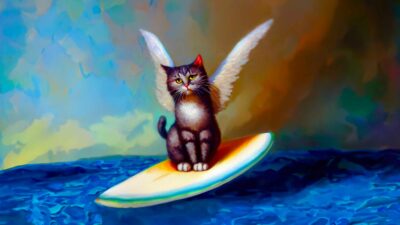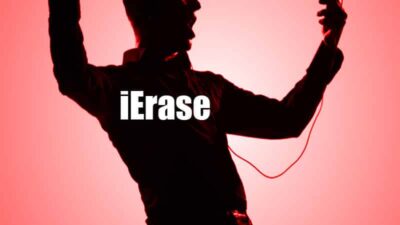Midjourney is a powerful AI tool that enables users to create stunning visuals from text prompts. But can you actually use these images commercially to make money? Here’s what you need to know about Midjourney’s commercial licensing.
Can You Use Midjourney Images Commercially?
The short answer is yes – but there’s a catch. To use Midjourney images for commercial purposes, you need to be a paid subscriber. Free users are limited to personal and non-commercial use under the Creative Commons Attribution-NonCommercial 4.0 International License (CC BY-NC 4.0).
What does this mean in practice? If you’re a paid Midjourney user, you can use your generated images for:
- Marketing materials and advertising
- Product designs and merchandise
- Book covers and illustrations
- Website graphics and social media content
- Logo design and branding elements
However, it’s crucial to understand that while you can use these images commercially, you don’t have exclusive copyright ownership. This leads us to an important question:
Are Midjourney Images Copyright-Free?
Not exactly. While paid users can use images commercially, they don’t possess exclusive rights to the content they create. This means other users could potentially generate and use the same or similar images. It’s a unique situation that sets AI-generated art apart from traditional copyrighted works.
In fact, the U.S. Copyright Office has stated that AI-generated art cannot be copyrighted. This creates an interesting scenario where you can use and profit from the images, but you can’t prevent others from using them as well.
Key Considerations for Commercial Use
- Subscription Status: Remember, only paid subscribers can use images commercially. If you cancel your subscription, you can still use previously generated images, but new creations will fall under non-commercial licensing.
- Revenue Threshold: Companies grossing over $1,000,000 annually must subscribe to the Midjourney Pro Plan for commercial use. This is a crucial point for larger businesses looking to incorporate Midjourney into their workflow.
- Upscaled Images: If you upscale another user’s image, that upscaled version belongs to the original creator, not you. Always get permission before using someone else’s upscaled work commercially.
- Terms of Service Compliance: Familiarize yourself with Midjourney’s Terms of Service, particularly Section 4 on Copyright and Trademark. Staying compliant is essential to avoid potential legal issues.
- Global Considerations: While we’ve focused on U.S. regulations, it’s important to note that laws regarding AI-generated art vary globally and are still evolving in many regions.
- Your Subject: Even though the images you create in Midjourney are copyright, free, your subject matter may be a different story. Be careful about generating images of famous landmarks, logos, famous people, famous art, and any other subject that might have a copyright. For example, you will probably get sued if you tried to create an AI-generated Taylor Swift calendar.
Practical Applications: From Concept to Commerce
So, how can you put Midjourney’s commercial licensing to work? Here are some ideas:
- E-commerce: Create unique product images or design custom merchandise.
- Marketing: Generate eye-catching visuals for ad campaigns or social media.
- Publishing: Design book covers or illustrate content for digital and print media.
- Branding: Develop distinctive logos or visual identities for businesses.
- Game Development: Create assets for characters, environments, or promotional materials.
- Website Publishing: Do you manage a blog? You can use your Midjourney images on your website(s).
Remember, while Midjourney offers incredible creative possibilities, it’s not a one-size-fits-all solution. For projects requiring consistent character designs or highly specific visual elements, you may need to combine Midjourney-generated content with traditional design work.
Did you know you can sell Midjourney-generated art? Our new article explains the ins and outs of commercial use, from subscription requirements to legal considerations. Don't miss out on this game-changing tool! #MidjourneyArt… Share on XNavigating the Grey Areas Of AI-Generated Art

As with any emerging technology, there are still some uncertainties surrounding AI-generated art. Here are a few tips to navigate these grey areas and keep the lawyers happy:
- Document Your Process: Keep records of your prompts and iterations to demonstrate your creative input. Consider using your prompts in the image descriptions.
- Be Transparent: When using Midjourney images commercially, consider disclosing that they’re AI-generated to maintain trust with your audience.
- Combine and Customize: Mix Midjourney-generated elements with your own designs or modifications to create truly unique work.
- Stay Informed: Keep up with changes in Midjourney’s terms and evolving legal perspectives on AI-generated art.
The Future of AI Art and Commerce
As AI tools like Midjourney continue to advance, we’re likely to see further developments in how these images can be used commercially. The legal and ethical landscape surrounding AI-generated art is still taking shape, and it’s an exciting time for creators and businesses alike.
Midjourney’s commercial licensing opens up a world of possibilities for visually-driven projects and businesses. By understanding the terms, limitations, and best practices, you can harness the power of AI-generated art to enhance your creative and commercial endeavors.
Remember, the key to success lies in using Midjourney as a tool to augment your creativity, not replace it. As you explore the commercial potential of AI-generated art, let your unique vision guide the way. Who knows? Your next big idea might just be a text prompt away.
So, to answer the question, can you use MidJourney images commercially? Yes. But just follow the rules!
Urooj is a freelance writer of some repute, even if she says so herself. Her goal in life is to be published in every international magazine and visitor-load-weary website. She can be contacted at kaziurooj [at] gmail [dot] com.






















 10 Ways To INCREASE Your Odds Of A Shark Attack
10 Ways To INCREASE Your Odds Of A Shark Attack
Leave a Reply
You must be logged in to post a comment.